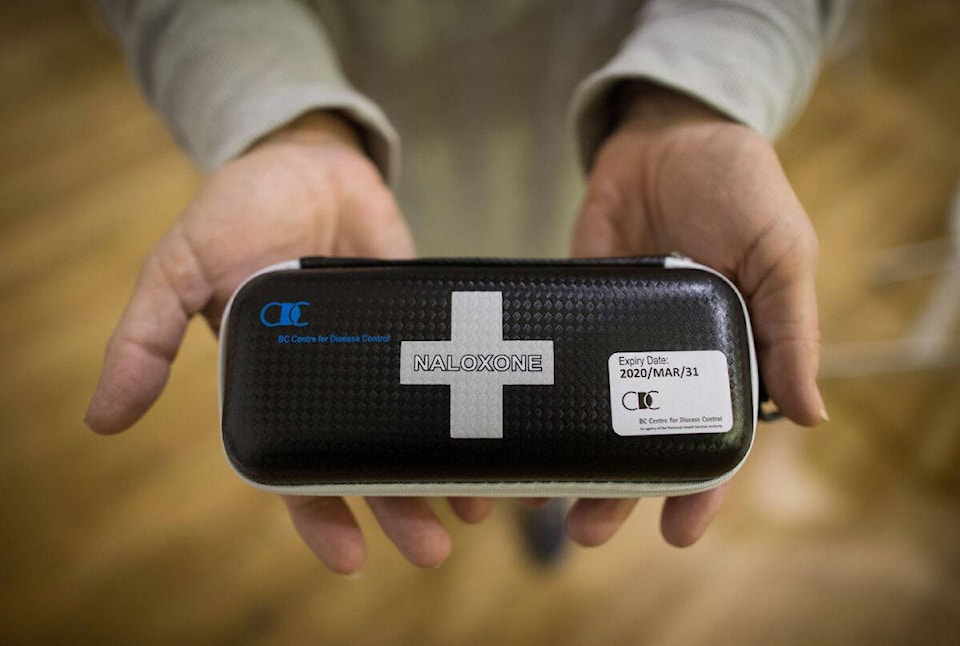The Canadian Red Cross in B.C. wants people in Greater Victoria who administer naloxone to have more access to the intranasal version.
A report released by the Canadian Press revealed that doctors are advocating for more naloxone spray kits to be readily available because people will be more comfortable using them. The suggestion comes from recognizing that when people overdose, it’s common for a person could be using more than one substance.
In B.C., the intranasal version is not readily available like it is in other provinces like Ontario and Quebec.
There are two types of kits: an injectable naloxone kit and a nasal spray naloxone kit – each comes with its own supplies and contains educational material and contact information that could help prevent future overdoses. Naloxone nasal spray comes in a device with two prongs that can fit into a nostril to administer the medication to someone who has overdosed.
According to a panel led by the B.C. Centre for Disease Control (BCCDC), they are seeking to standardize kits at a variety of sites such as pharmacies, community groups and hospitals for anyone who responds to an overdose.
Naloxone, which blocks the effects of opioids, are distributed across the country in free kits that include injectable naloxone in vials along with syringes, gloves, alcohol swabs and a “barrier shield” to place on someone’s face before administering mouth to mouth. According to the Red Cross, an overdose can be temporarily reversed in three to five minutes if administered correctly.
READ MORE: Province responds after Oak Bay police sound alarm over lack of naloxone funding
“More than 1.9 million naloxone kits have been distributed in B.C. since 2015 through 2,200 locations, according to the BCCDC, which started the country’s longest-running provincewide take-home naloxone program in 2012. A community group called Streetworks began Canada’s first naloxone program in Edmonton in 2005 which has also helped the province’s efforts.”
Dr. Jane Buxton, a physician epidemiologist, said take-home naloxone programs are varied among provinces and territories with some collecting data through distribution from pharmacies, while others rely on organizations who may not be providing adequate information.
“The intranasal (formulation) is available to anybody in some provinces and in others it’s more limited,” said Buxton, who recently retired as the medical lead for harm reduction at the BCCDC.
At a pharmacy in Vancouver, about a 10-minute walk from the Downtown Eastside, the intranasal naloxone costs $75, but is not stocked and must be ordered, unlike the injectable version.
Buxton said that after listening to people’s lived experiences, she believes the public may find the injectable version to be better. She added that many people would be too anxious to load a syringe with naloxone from an ampoule while trying to help an extremely drowsy or unconscious person.
She also suggested it would help to more accurately report the number of overdoses that occur across the country. Excluding items such as three retractable syringes, the kits include a form with a dozen questions regarding when and how the overdose occurred. But many responders may not email or fax it to the BCCDC as requested, leading to the true number of reversed overdoses to not be properly recorded.
READ MORE:New study challenges assumptions that Airbnb greatly impacts Canadian rents
